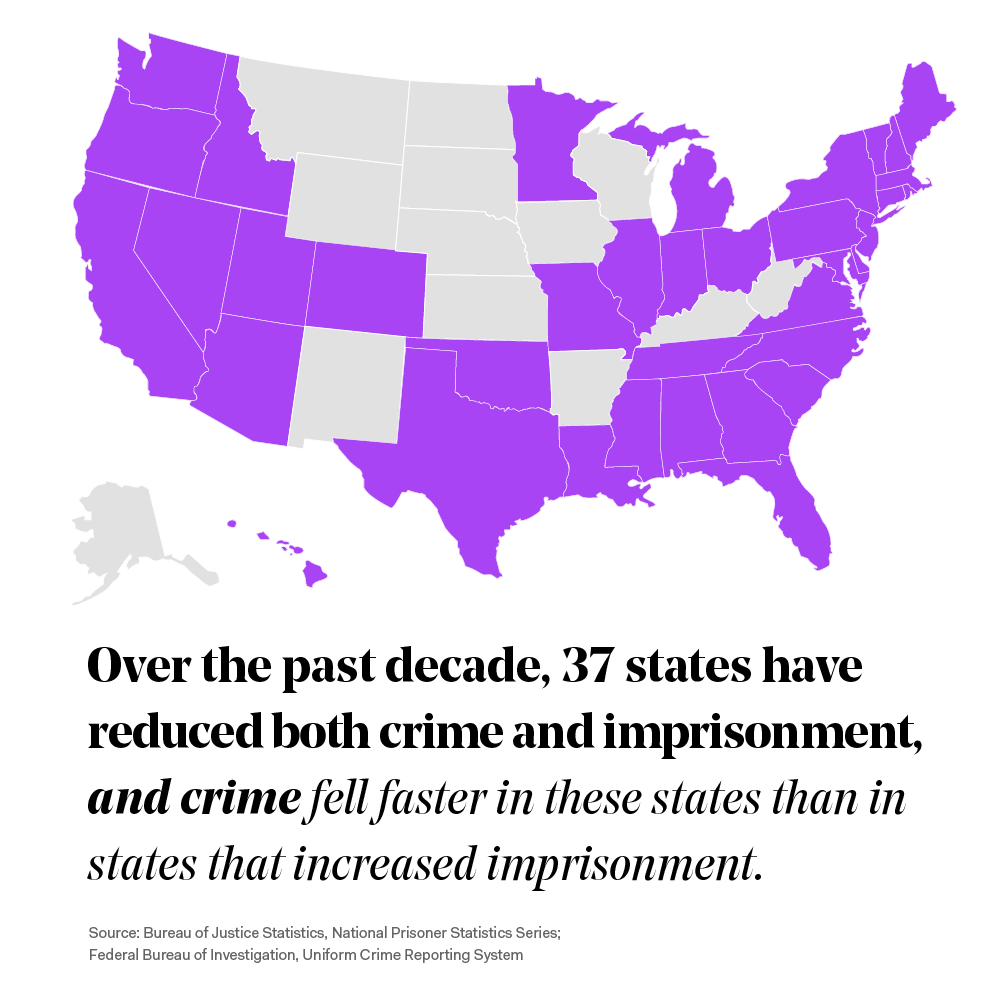Over the last two decades, policymakers and voters in red, blue, and purple jurisdictions have made meaningful strides to address mass incarceration by adopting a wide range of criminal justice reforms. Bipartisan support for reducing the number of people in jail and prison has been fueled by a robust body of research built over decades that has proven that jail stays and long prison sentences do not reduce crime rates. In fact, over the past decade, 37 states have reduced both crime and imprisonment, and crime fell faster in these states than in states that increased imprisonment.1 Today, the overall crime rate has fallen 18 years in a row to its lowest point in thirty years,2 the number of people in prison is at its lowest point in two decades, and the reforms that brought us here have expanded freedom and opportunities to tens of millions of Americans.


